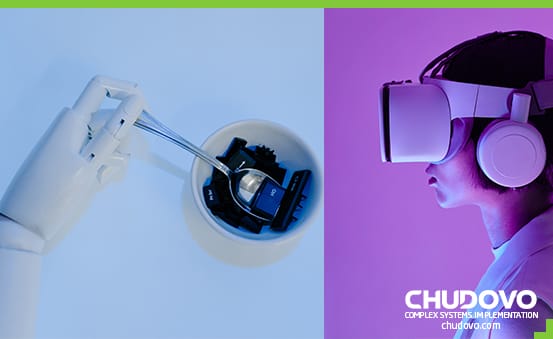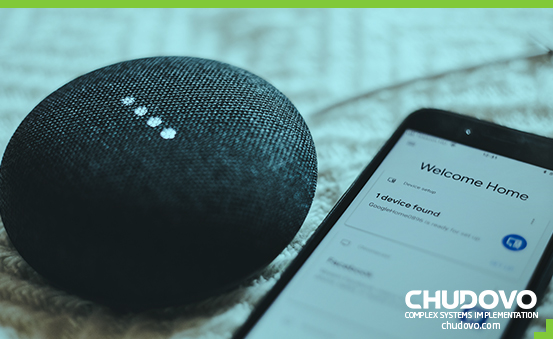
Engineering the Future of Home: A Deep Dive into Smart Home Automation App Development
In an age where technology permeates every facet of our lives, it’s no surprise that our homes are becoming smarter, too. The rise of smart home automation apps has transformed how we interact with our living spaces, making our homes more efficient, convenient, and secure.
This comprehensive article will take a deep dive into the world of smart home automation app development. From understanding the market statistics to exploring the intricacies of building a custom home app, we’ll equip you with the knowledge you need to engineer the future of smart living.
Table of contents
- What do Market Statistics Say About Smart Home App Development?
- Types of Smart Home Applications
- 5 Types Of Connectivity For Smart Home Devices
- How Does Smart Home Automation Work?
- Factors Affecting the Cost of Building a Smart Home Automation App
- Key Features of a Smart Home App
- Benefits of Our Smart Home App Development Services
- Challenges Associated With the Smart Home Automation App Development Process
- Steps to Create a Smart Home Automation App
- How to Integrate Smart Home Devices or An App with Third-Party Services Like Google Home & Amazon Alexa?
- Ready-made Platforms for Home Automation App Development
- Should I Use a Readymade Smart Home App or Develop a Custom Solution?
- 5 Security Matters to Take Note when Making a Home Automation App
- Smart Home Technology Trends
- Conclusion
- FAQs

What do Market Statistics Say About Smart Home App Development?
Before we embark on our journey into the intricacies of smart home app development, let’s take a moment to grasp the magnitude of this industry. Market statistics paint a promising picture, indicating a rising demand for smart home solutions. The global smart home market is poised for exponential growth, with a projected market value of over $141 billion by 2026.
But what exactly is driving this impressive growth? It’s a combination of factors, including the increasing adoption of IoT (Internet of Things) devices, rising consumer awareness of energy efficiency, and the quest for enhanced security and convenience. As technology advances, smart homes are no longer a luxury but a standard feature of modern living.
Types of Smart Home Applications
Smart home applications can be broadly categorized into two types, which include the following:
- Stand-Alone Applications:
These are individual apps for specific smart home devices or systems. For example, a standalone app may control a smart thermostat or a lighting system. These apps offer a high level of customization for users but may require multiple apps for different devices.
- Integrated Smart Home Platforms:
Integrated platforms combine multiple smart home devices under a single app or ecosystem. Examples include Amazon Alexa and Google Home. These platforms offer a unified user experience but may have limitations in terms of device compatibility.
The choice between standalone applications and integrated platforms depends on factors such as user preferences, device diversity, and the overall smart home strategy.
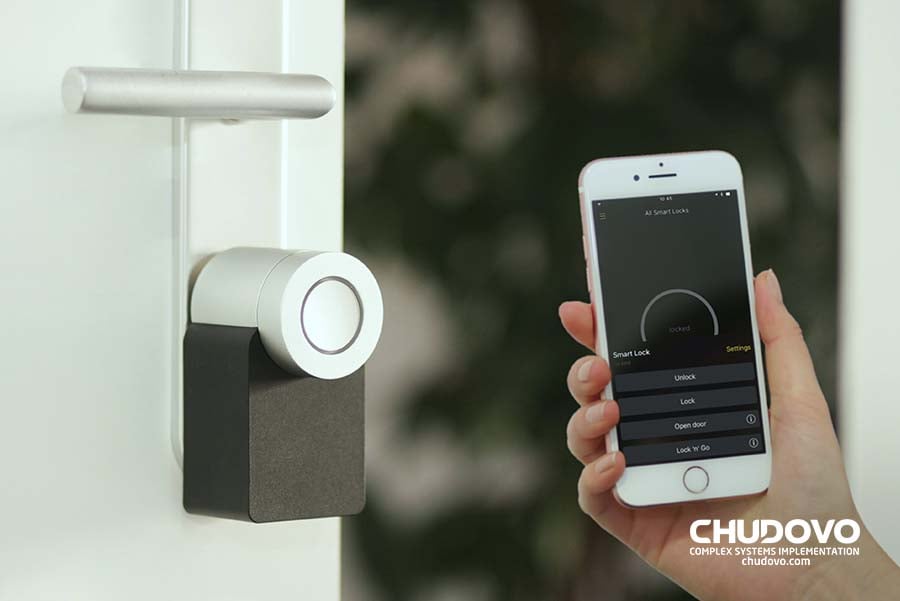
5 Types Of Connectivity For Smart Home Devices
When it comes to smart home devices, connectivity is the linchpin that enables seamless communication and control. There are five primary types of connectivity used in smart home devices:
- 1. Wi-Fi:
Wi-Fi is the most common and versatile connectivity option. It provides high-speed internet access and allows devices to connect to a home network. Wi-Fi-enabled devices can be controlled remotely through a smartphone or computer.
- 2. Bluetooth:
Bluetooth is ideal for short-range communication between devices. It’s commonly used for smart speakers, headphones, and other peripherals.
- 3. Z-Wave:
Z-Wave is a wireless communication protocol designed specifically for smart home devices. It operates on low-power radio frequencies and is known for its reliability and ability to create mesh networks.
- 4. Zigbee:
Similar to Z-Wave, Zigbee is a wireless communication protocol for IoT devices. It’s often used in smart lighting, thermostats, and sensors.
- 5. Thread:
Thread is a low-power, wireless IoT connectivity standard that’s gaining traction. It’s designed for reliability and is particularly well-suited for smart home devices.
Each connectivity type has its advantages and limitations, and the choice depends on the specific requirements of the smart home application.

How Does Smart Home Automation Work?
At its core, smart home automation involves the integration of various devices and systems to create a connected and intelligent living environment. Here’s a simplified overview of how smart home automation works:
- Sensors and Devices: Smart home automation starts with installing sensors and devices throughout the home. These include motion sensors, smart thermostats, lighting controls, security cameras, and more.
- Connectivity: These devices are connected to a central hub or a cloud-based platform through the chosen connectivity technology, be it Wi-Fi, Zigbee, or others.
- Data Collection: Here, sensors continuously collect data on various aspects of the home environment, such as temperature, humidity, occupancy, and security status.
- Data Processing: The collected data is then sent to the central hub or cloud platform, where it is processed and analyzed. This analysis can trigger predefined actions based on user preferences and automation rules.
- User Control: Users can control and monitor their smart home devices through a smartphone app or voice commands. They can set schedules, create automation routines, and receive real-time notifications.
- Automation: Smart home automation allows for the creation of custom scenarios and automation rules. For example, lights can automatically turn on when motion is detected, or the thermostat can adjust temperature settings based on occupancy patterns.
- Remote Access: Smart home systems offer remote access, enabling users to control their devices anywhere with an internet connection.
- Integration: Many smart home systems also allow integration with third-party services like voice assistants (e.g., Amazon Alexa, Google Assistant) for voice control and broader interoperability.
Factors Affecting the Cost of Building a Smart Home Automation App
Building a smart home automation app is a complex process that involves several factors influencing its cost. Understanding these factors is essential for planning and budgeting your development project. Let’s delve into the key elements that impact the cost:
1. Complexity of Features
The complexity of the features you want to include in your smart home app significantly affects the development cost. Basic apps with limited features will naturally cost less, while more sophisticated apps with advanced automation, security, and integration capabilities will require a higher budget.
It is advisable to conduct thorough market research to understand user preferences and industry trends to determine the right feature set for your app.
2. Platforms and Devices
Deciding which platforms your app will support is a crucial decision. Will it be available on iOS, Android, or both? Each platform adds development complexity and cost. Additionally, supporting various devices and connectivity options may increase development expenses.
Consider your target audience and their preferred platforms when making this decision.
3. Designing UI/UX
User interface (UI) and user experience (UX) design are critical for any app. A well-designed interface enhances user engagement and satisfaction. However, designing an intuitive and visually appealing UI/UX requires skilled designers and can impact development costs.
4. Integration with Hardware and APIs
For a smart home app to function effectively, it must seamlessly integrate with various hardware devices and third-party APIs. Each integration point adds complexity to the development process and may require custom coding, which can increase costs.
5. Security and Data Privacy
Security is paramount in smart home apps, as they deal with sensitive user data and control over physical devices. Implementing robust security measures and ensuring data privacy compliance can be resource-intensive and impact the project’s budget.
- Location and Expertise of the Development Team
The location of your development team and their expertise level can significantly influence costs. Hiring a skilled team from regions with lower development costs may reduce expenses, but balancing cost savings with the need for a competent and experienced team is crucial.
Overall, choosing the right development partners like Chudovo and carefully managing the project can help mitigate cost overruns.

Key Features of a Smart Home App
A successful smart home app should offer a range of features that enhance the user experience and provide real value. Here are some key features to consider:
- Easy User Registration
A seamless and hassle-free user registration process sets the stage for a positive user experience. Smart home apps prioritize simplicity, allowing users to create accounts effortlessly, ensuring they can swiftly access and control their devices.
- Remote Control and Automation
The essence of smart living lies in the ability to control your home from anywhere in the world. Smart home apps empower users with remote control capabilities, letting them adjust settings, turn devices on or off, and easily automate tasks.
- Real-time Push Notifications
Stay informed about your home’s status in real time with push notifications. Receive alerts and updates regarding security breaches, device statuses, and important events, ensuring you’re always in the know.
- User Roles and Permissions
Smart homes often accommodate multiple users, each with their own preferences and needs. User roles and permissions allow the creation of tailored access levels, ensuring that family members or household occupants can control devices according to their specific requirements.
- Crafting Different Scenarios
Smart home apps take customization to the next level by enabling users to create different scenarios. Whether setting the mood with ambient lighting or adjusting the thermostat for a cozy evening, scenarios provide unparalleled control and convenience.
- Personal Analytics Insights
Uncover the hidden patterns of your home’s operations with personal analytics. Smart home apps offer users valuable insights into energy usage, device usage patterns, and recommendations for optimization, helping them make informed decisions.
- Seamless Onboarding Guide
Navigate the world of smart living effortlessly with a step-by-step onboarding guide. This feature ensures that users can easily set up their apps and devices, providing them with a hassle-free introduction to their smart home.
- Intuitive Room Selection Feature
Managing devices is made intuitive with a room selection feature. Users can categorize and control devices by room, simplifying the management of their smart ecosystem.
- Fine-grained Access Configuration
Empower users with granular control over access permissions. With access configuration, users can define who can control specific devices or access particular functionalities, enhancing security and privacy.
- Immersive IoT Audio & Video Solutions
Experience the future of multimedia with IoT audio and video solutions. Smart home apps seamlessly integrate with audio and video devices, offering immersive entertainment and security monitoring.
- Home Appliances
Integrating smart home apps with home appliances unlocks a world of possibilities. From controlling your refrigerator’s temperature to scheduling your oven, these apps enhance the functionality of everyday appliances.
The key features of a smart home app form the foundation of modern living. These features, designed to enhance convenience, security, and energy efficiency, empower users to unlock the full potential of their smart homes. As technology advances and user expectations grow, smart home apps will continue to shape the way we interact with our living spaces, creating a future where the boundaries of innovation are pushed ever further.
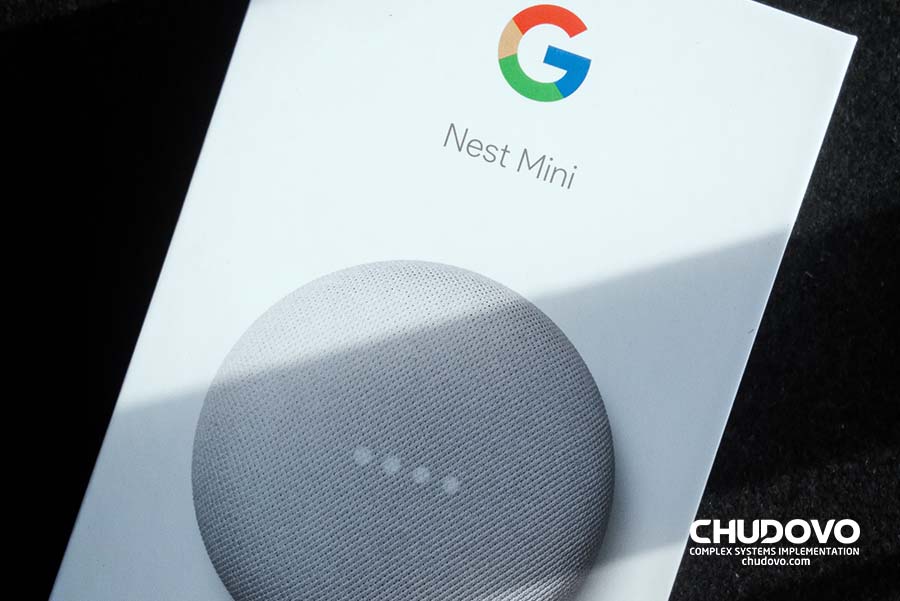
Benefits of Our Smart Home App Development Services
In the dynamic world of smart home automation, our development services stand as a beacon of innovation and practicality. Let’s unravel the multifaceted benefits our smart home app development services bring to your doorstep.
- Improved Living Standards
At the core of smart living lies the promise of an elevated lifestyle. Our smart home apps empower users to create an environment that caters to their unique preferences, enhancing comfort, convenience, and overall quality of life.
- Reduced Human Effort
Automation is the hallmark of smart living. Users can reclaim valuable time and energy by entrusting mundane tasks to our smart home apps. Whether it’s adjusting the thermostat or managing lighting, automation reduces the need for manual control.
- Enhanced Home Security
Your peace of mind is our priority. Our smart home apps offer robust security features, including real-time monitoring, alerts, and access control. Rest easy knowing that your home is safeguarded against potential threats.
- Increased Energy Efficiency
Efficiency is the cornerstone of sustainability. Our apps empower users to optimize energy consumption, leading to significant cost savings and a reduced environmental footprint. Smart home automation is synonymous with eco-friendly living.
- Improved Appliance Functionality
The integration of smart home apps extends the capabilities of everyday appliances. From controlling your kitchen appliances to managing your entertainment systems, our apps enhance the functionality of your household devices.
- Home Management Insights
Knowledge is power. Our smart home apps provide users with invaluable insights into their home’s operations. Users gain a deeper understanding of their living space by tracking energy usage, device patterns, and optimization recommendations.
- Easy Performance Tracking
Stay in control with real-time performance tracking. Our apps offer a clear view of device statuses, energy consumption, and security, ensuring that users are always informed and can take timely actions.
The benefits of our smart home app development services are not merely technological advancements; they are a testament to our commitment to enhancing your lifestyle. In an era of rapid technological progress, our services empower you to unlock the full potential of your home, transcending the boundaries of convenience, security, and sustainability.

Certified engineers
Convenient rates
Fast start
Profitable conditions
Agreement with
EU company
English and German
speaking engineers
Challenges Associated With the Smart Home Automation App Development Process
While the benefits of smart home automation are substantial, the development process comes with its share of challenges. Here are five key challenges developers may encounter:
- Complexity of Device Ecosystem: Smart homes often consist of diverse devices from different manufacturers. Ensuring compatibility and seamless integration can be complex.
- Security Concerns: Protecting user data and ensuring the security of connected devices is a top priority. Developers must implement robust security measures.
- User Privacy: Smart home apps collect sensitive data about user habits and routines. Managing and protecting this data while respecting user privacy is a significant challenge.
- Interoperability: Ensuring that devices from various manufacturers can work together seamlessly is an ongoing challenge in the smart home ecosystem.
- Rapid Technological Advancements: The technology landscape evolves rapidly. Developers must stay up-to-date with the latest trends and standards to remain competitive.
Steps to Create a Smart Home Automation App
Now that we’ve explored the factors that affect the cost, let’s outline the steps involved in creating a smart home automation app:
- Defining the Function and Features
Begin by defining the app’s core functionality and feature set. Consider user needs, market trends, and competitor analysis to identify unique selling points.
- Market Research and Analysis
Conduct in-depth market research to understand user preferences, pain points, and market gaps. This information will guide feature prioritization and positioning in the market.
- UI/UX Design
Design an intuitive and visually appealing user interface. Ensure that the user experience is seamless and user-friendly.
- Backend Development
Develop the backend infrastructure, including server setup, databases, and cloud integration. Ensure robust security measures are in place.
- Frontend Development
Create the app’s frontend, ensuring compatibility with the chosen platforms (iOS, Android, etc.). Implement features based on the defined functionality.
- Testing and Troubleshooting
Thoroughly test the app for functionality, security, and usability. Address any issues or bugs identified during testing.
- Ongoing Support And Maintenance
After launching the app, provide ongoing support and maintenance to address user feedback, update features, and ensure security and performance.
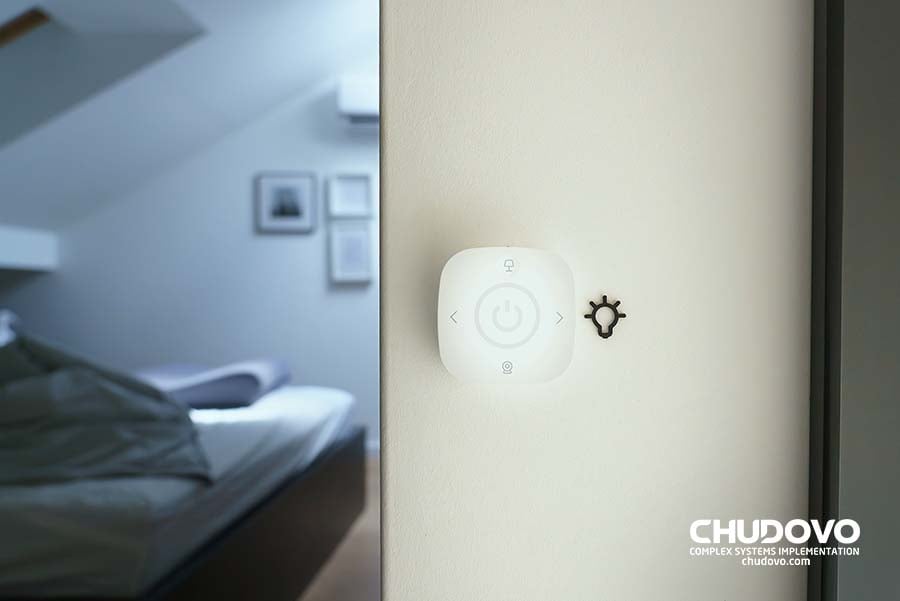
How to Integrate Smart Home Devices or An App with Third-Party Services Like Google Home & Amazon Alexa?
Integrating your smart home app with popular third-party services like Google Home and Amazon Alexa can extend its functionality and reach. Here’s a simplified step-by-step guide to achieve this:
- API Access: Check if the third-party service provides an API (Application Programming Interface) for integration. Most services like Google Home and Amazon Alexa offer developer APIs.
- Developer Account: Create a developer account or register your app with the third-party service. This will provide you with the necessary credentials for API access.
- API Documentation: Study the API documentation provided by the third-party service. It will outline the endpoints, authentication methods, and data formats required for integration.
- Implement Authentication: Set up authentication mechanisms as per the API documentation. This may involve generating API keys or implementing OAuth 2.0 for secure access.
- Code Integration: Write the code to integrate your app with the third-party service. This includes making API requests, handling responses, and managing user authentication.
- Testing: Thoroughly test the integration to ensure it works seamlessly with the third-party service. Test various scenarios, including voice commands and device control.
- Submission and Approval: If required, submit your integration for approval to the third-party service’s developer program. This step ensures your integration complies with their guidelines.
- Deployment: Once approved, deploy the updated version of your smart home app with the integrated functionality.
By integrating with popular third-party services, you can tap into a broader user base and offer enhanced functionality to your app users.
Ready-made Platforms for Home Automation App Development
Developing a smart home automation app from scratch is not the only option. Several ready-made platforms and frameworks are available to simplify the development process. Here are some popular options:
- Apple HomeKit: HomeKit is Apple’s framework for smart home app development. It provides a standardized way to connect and control smart home devices using iOS devices.
- Google Smart Home: Google offers a platform for developing smart home actions, allowing integration with Google Assistant and Google Home devices.
- Amazon Alexa Smart Home: Amazon provides tools and APIs for integrating smart home devices with the Alexa ecosystem, enabling voice control and automation.
- Samsung SmartThings: SmartThings is a versatile platform that supports a wide range of devices and allows developers to create custom smart home apps.
- OpenHAB: OpenHAB is an open-source home automation platform that offers flexibility and customization options for developers.
These platforms can significantly speed up development and offer built-in compatibility with popular smart home ecosystems.
Should I Use a Readymade Smart Home App or Develop a Custom Solution?
Choosing between a ready-made smart home app and a custom solution depends on your specific needs and goals. Here are some considerations:
Ready-made Smart Home App:
- Faster Development: Ready-made apps leverage existing platforms and frameworks, reducing development time.
- Ecosystem Integration: They often come with built-in compatibility with popular smart home ecosystems like Google Home or Amazon Alexa.
- Cost-Effective: Using a ready-made app can be more cost-effective, especially for smaller projects or startups.
Custom Solution:
- Greater Control: A custom solution provides full control over the app’s features, design, and functionality.
- Unique Branding: You can create a unique user experience and brand identity.
- Scalability: Custom apps are highly scalable and can be adapted to evolving needs.
The choice ultimately depends on your project’s scope, budget, and long-term goals. A custom solution may be the best choice for large-scale, unique projects, while ready-made apps can be suitable for smaller projects or rapid development.
5 Critical Security Matters to Take Note when Making a Home Automation App
Security is paramount in home automation apps, as they handle sensitive data and control critical systems. Here are five security considerations to prioritize:
- Data Encryption
Data is the lifeblood of home automation apps. Implementing end-to-end encryption ensures that data transmitted between the app and connected devices remains secure and confidential. Shielding user data from prying eyes is non-negotiable.
- User Authentication
The foundation of security lies in user authentication. Strong authentication methods, such as multi-factor authentication (MFA), ensure that only authorized users can access the app and control connected devices. Your home should be yours alone to control.
- Secure API Communication
Home automation apps often rely on external services and APIs for extended functionality. Ensuring that API communications are secure is paramount. Utilize secure protocols like HTTPS to protect data in transit and safeguard against unauthorized access.
- Regular Firmware Updates
Connected devices are only as secure as their firmware. Regularly updating the firmware of integrated devices is critical to patching vulnerabilities and enhancing security. Security should evolve with technology, not lag behind it.
- Security Audits
Security is an ongoing commitment. Regular security audits and penetration testing are essential to identify and address vulnerabilities in both the app and the entire ecosystem. Staying one step ahead of potential threats is the key to long-term security.
In an era of ever-expanding smart technologies, security must remain at the forefront of home automation app development. By meticulously addressing these five security matters, developers can create a digital fortress around users’ homes, ensuring their sanctuaries remain safe, private, and protected.
Smart Home Technology Trends
Keeping an eye on emerging trends is crucial to stay competitive in the smart home app development industry. Here are some notable trends to watch:
- Voice Control
Voice assistants like Amazon Alexa and Google Assistant have become integral to smart homes. Voice control allows users to interact with their devices effortlessly, from adjusting lighting to checking the weather. This trend is redefining user interaction.
- AI and Machine Learning
Artificial intelligence and machine learning are at the forefront of smart home technology. These technologies enable personalization, energy optimization, and predictive analytics. Smart homes are becoming smarter, anticipating and adapting to user preferences.
- Energy Efficiency
Energy efficiency is a rising trend in smart homes. Users are increasingly seeking ways to reduce their environmental footprint and lower utility bills. Smart home technology offers energy-saving features, including smart thermostats and lighting control.
- Health and Wellness Integration
Smart homes are now extending their capabilities to monitor health and well-being. From fitness tracking to air quality monitoring, these integrations cater to the holistic health of residents, providing insights and support for a healthier lifestyle.
- Edge Computing
Edge computing is transforming the way data is processed in smart homes. By performing computations closer to the data source, it reduces latency and enhances real-time responsiveness. This trend is critical for applications like security and automation.
- Interoperability Initiatives
Efforts to standardize communication between smart devices and ecosystems are gaining momentum. Interoperability initiatives aim to make different brands and systems work seamlessly together, reducing user compatibility issues.
The world of smart home technology is a dynamic and ever-expanding one. Staying informed about these trends is essential for both consumers and developers, as they pave the way for a future where our homes are not just smart but also responsive to our needs and preferences.
As we look ahead, the possibilities are limitless, and the future of smart living holds the promise of a more convenient, efficient, and sustainable lifestyle.
Conclusion
As we draw the curtains on our exploration of smart home technology, we find ourselves at the crossroads of innovation and possibility. The journey through the intricacies of smart home app development, security considerations, and emerging trends has illuminated a path to a future where our homes are more than just physical structures—they are intelligent, responsive, and deeply intertwined with our lives.
In this concluding moment, let us pause to reflect on the profound transformations that smart living is ushering in. It is a future where the boundaries between technology and lifestyle blur, where convenience, efficiency, and sustainability coalesce to redefine how we experience our living spaces.
As developers, designers, and users of smart home technology, we stand at the threshold of a world where our homes anticipate our needs, adapt to our preferences, and enhance the quality of our lives. The promise of a smarter, more connected future beckons us forward.
Let us embrace this future with open arms as pioneers of smart homes. Together, we can continue to shape the evolution of smart homes, where innovation knows no bounds and the possibilities are as limitless as our imagination.
FAQs
What is smart home app development?
Smart home app development involves creating software applications that allow users to control and automate various aspects of their home, such as lighting, heating, security, and appliances, through smartphones or other devices.
How much does it cost to build a smart home app?
The cost of building a smart home app varies depending on factors such as the app’s complexity, features, platform support, and security requirements. A basic app may cost less, while a more advanced app with sophisticated features can have a higher development cost.
What are the key features of a smart home app?
Key features of a smart home app include easy user registration, remote control and automation, push notifications, user roles, different scenarios, personal analytics, onboarding guides, room selection features, access configuration, IoT audio and video solutions, and integration with home appliances.
How do I integrate a smart home app with third-party services like Google Home or Amazon Alexa?
To integrate a smart home app with third-party services, follow these steps: access the service’s API, create a developer account, study the API documentation, implement authentication, write code for integration, thoroughly test, and submit for approval if required.
Do you want to live in the home of the future or build your dream smart home? You are just a click away. Contact us now to start living your dream!


